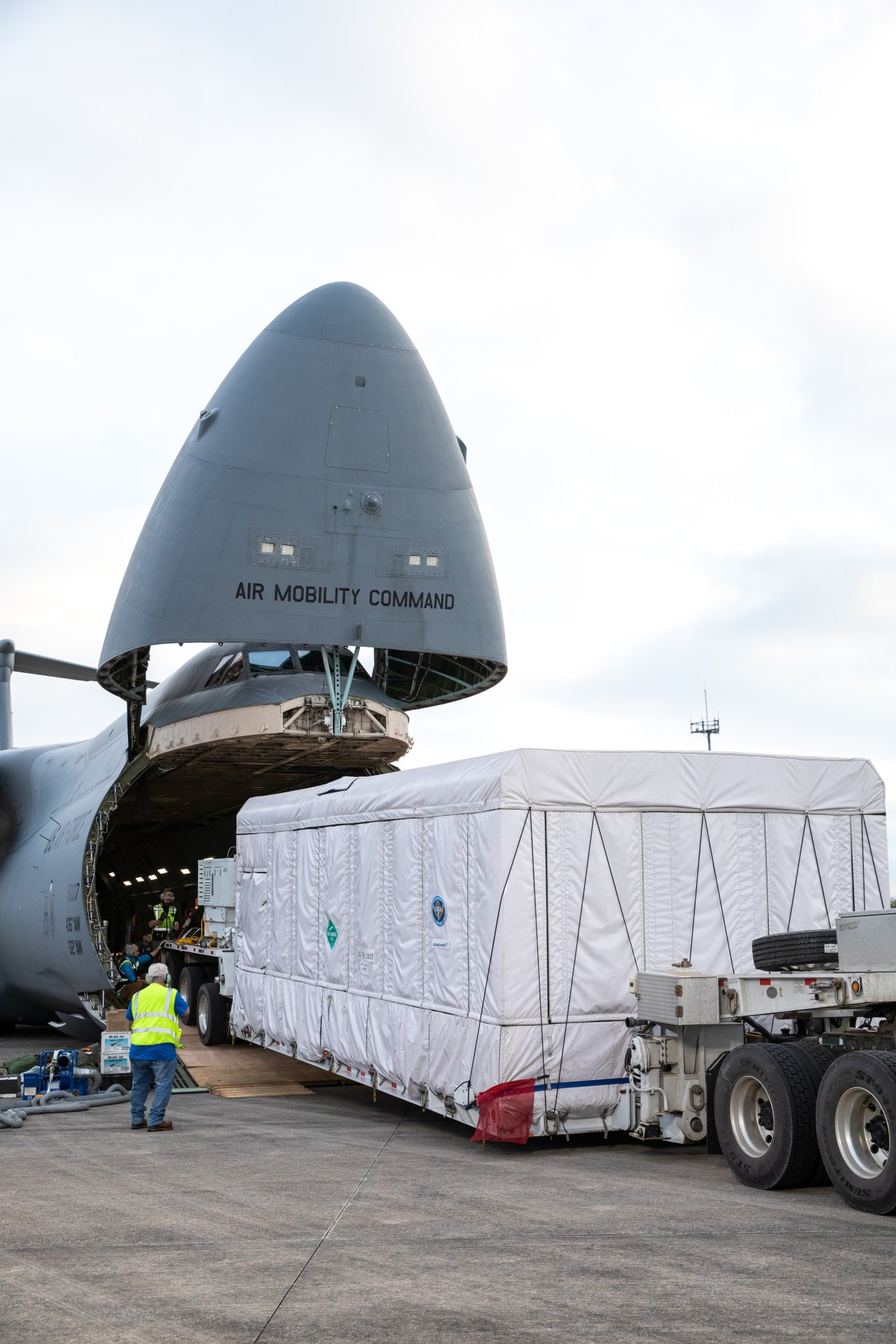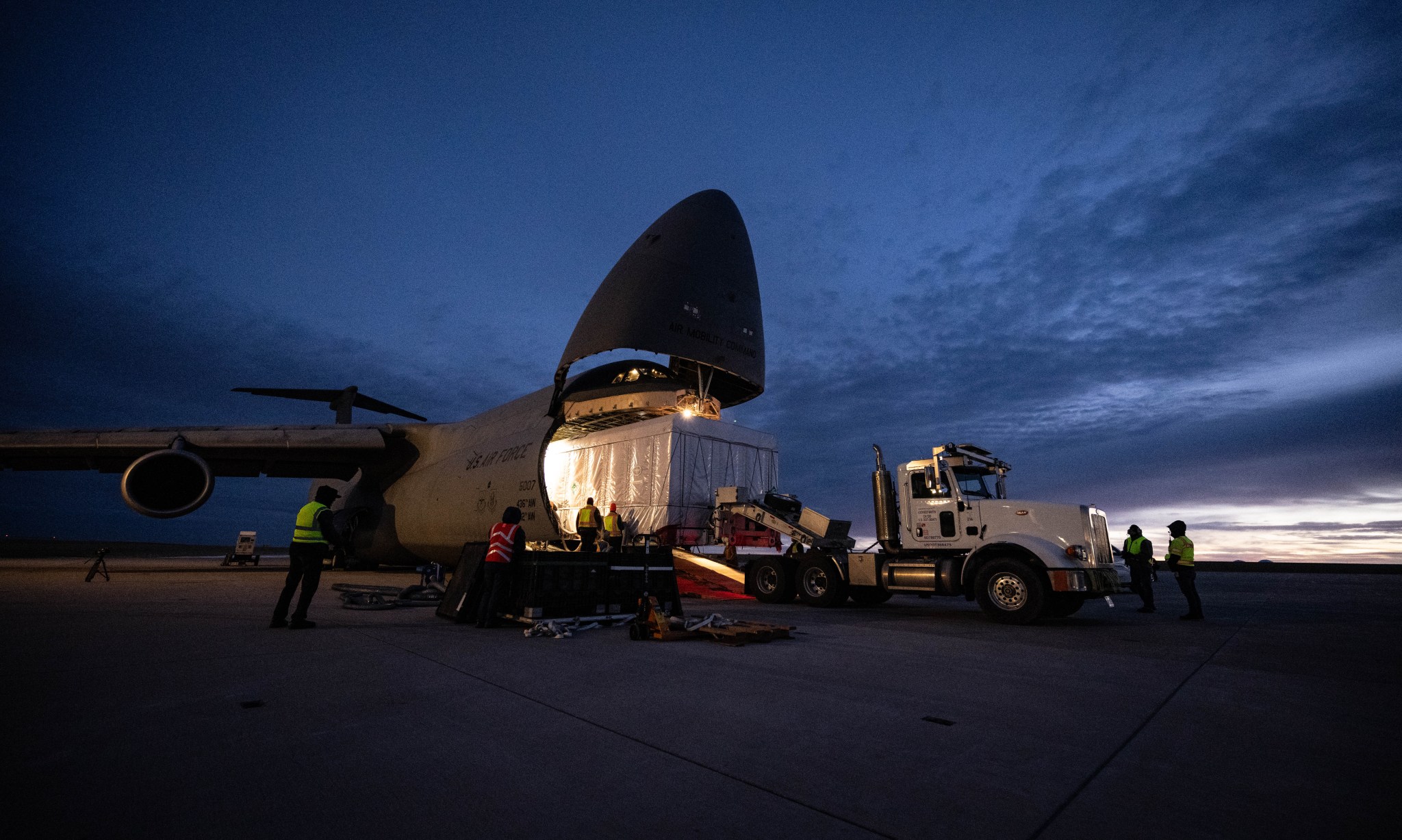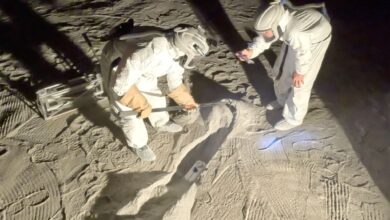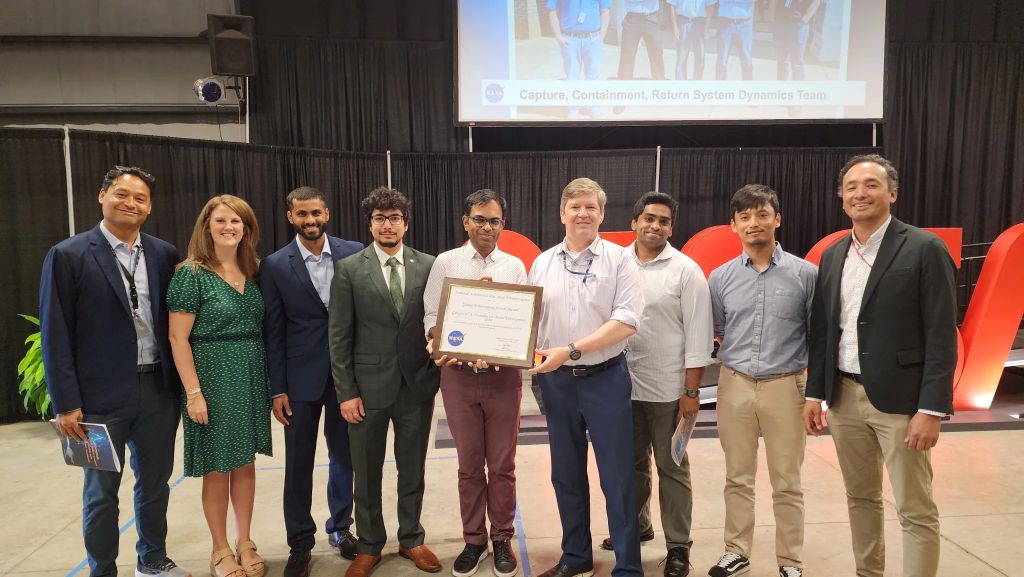NOAA’s GOES-U Arrives in Florida for Processing Ahead of Launch

The Geostationary Operational Environmental Satellite U (GOES-U), the fourth and final weather-observing and environmental monitoring satellite in NOAA’s GOES-R Series, is now in Florida. The satellite landed on Tuesday, Jan. 23, in a United States Air Force C-5M Super Galaxy cargo plane at the Launch and Landing Facility at NASA’s Kennedy Space Center.
Data from the environmental monitoring satellite constellation enables forecasters to predict, observe, and track local weather events that affect public safety like thunderstorms, hurricanes, wildfires, and solar storms.
Teams spent several hours offloading GOES-U then transferring it to the Astrotech Space Operations facility in nearby Titusville where they will process the spacecraft and perform final checkouts as part of launch preparations.
“GOES is a special circumstance because it’s a series of missions,” said Rex Engelhardt, GOES-U mission manager for NASA’s Launch Services Program. “Knowledge carries over from mission to mission, which makes for a really strong and a very experienced team. To procure and integrate satellites like GOES-U onto commercial rockets, the launch services team understands the requirements of what the satellites are going to need to reach orbit, and that knowledge is critical in bringing additional reliability to the integration process to help ensure success.”

NOAA’s Geostationary Operation Environmental Satellite-U (GOES-U) is offloaded from a C-5M Super Galaxy transport aircraft onto the flatbed of a heavy-lift truck at the Launch and Landing Facility at NASA’s Kennedy Space Center in Florida on Tuesday, Jan. 23, 2024. Crews transported the satellite to the Astrotech Space Operations facility in Titusville, Florida to prepare it for launch.
NASA/Isaac Watson
Fueling will be one of the key steps to readying the spacecraft to operate for 15 years in orbit. Technicians will add about 5,000 pounds of hypergolic propellants to GOES-U, then mate the spacecraft to a payload adapter and encapsulate it in a protective payload fairing as part of launch processing.
After testing and fueling are complete, the encapsulated spacecraft will move to the SpaceX hangar at Launch Complex 39A at NASA Kennedy. GOES-U is scheduled to launch no earlier than Tuesday, April 30, aboard a SpaceX Falcon Heavy rocket.
On board GOES-U are seven instruments, including a new Compact Coronagraph-1 (CCOR-1) instrument. As a part of NOAA’s Space Weather Follow On mission, CCOR-1 will observe the Sun’s outermost layer, called the corona, for large explosions of plasma that could produce geomagnetic solar storms. The CCOR-1 instrument will enhance capabilities to provide advance warnings up to four days ahead of these storms that can cause widespread damage to satellites, power grids, and communication and navigation systems.

U.S. Airmen assigned to the 9th Airlift Squadron and Lockheed Martin crew members load a National Oceanic and Atmospheric Administration Geostationary Operational Environmental Satellite onto a C-5M Super Galaxy at Buckley Space Force Base, Colorado, Jan. 22, 2024. (U.S. Air Force photo by Staff Sgt. Marco A. Gomez)
436th Airlift Wing Public Affair
The GOES-R Series satellites are planned to operate into the 2030s. Looking forward, NOAA is working with NASA to develop the next generation of geostationary satellites, called Geostationary Extended Observations, which will bring new capabilities in support of U.S. weather, ocean, and climate operations beyond the 2030s. NASA will manage the development of the geostationary satellites and launch them for NOAA.
“The GOES-R program demonstrates the tremendous value of NASA’s longstanding collaboration with NOAA,” said Renee Falden, program executive in the Joint Agency Satellite Division at NASA Headquarters in Washington. “We are taking the best qualities of that collaboration forward into the GeoXO program, which will continue NOAA’s key observations from geostationary orbit while generating new data streams for a broad community of users across the country.”
NASA’s Launch Services Program, based at Kennedy, manages the launch service for the GOES-U mission. NASA’s Goddard Space Flight Center oversees the acquisition of the spacecraft and instruments. Lockheed Martin designs, builds, and tests the GOES-R series satellites. L3Harris Technologies provides the primary instrument, the Advanced Baseline Imager, along with the ground system, which includes the antenna system for data reception.





